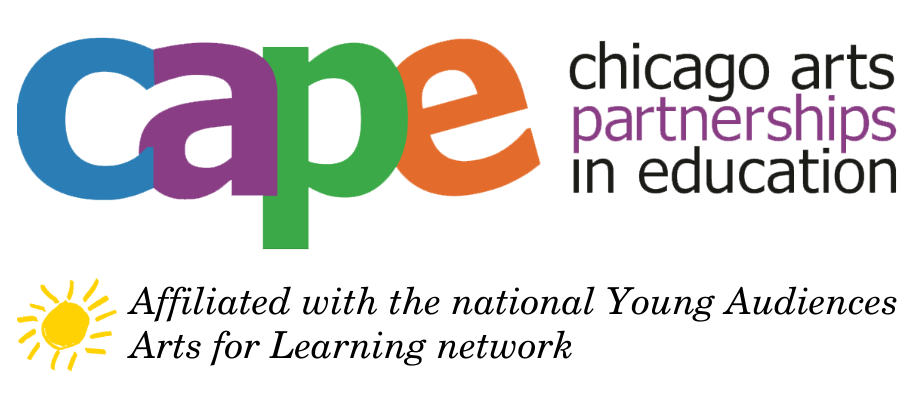CAPE Teacher Michelle Livas on the value of arts integration in a high school classroom
Michelle Livas, a teacher in CAPE’s Veteran Partnerships Program, answers the question:
What is important about the work you and your students do with your CAPE teaching artist? What is the value of arts integration in a high school classroom?
“When I first began working with CAPE (and Jessi, my teaching artist partner) four years ago, I felt it was important to do this kind of arts integration work because it seemed like students should be more creative in classes where they would not expect to be creative. Beyond that, I really hadn’t given it a ton of thought. It just seemed like a cool opportunity and a new, different experience. BUT THEN…I actually did the work. And it wasn’t work at all. Most parts of the experience ended up being enlightening and so much more valuable than I could have possibly imagined. (Learn more about CAPE’s approach to arts integration)
For the students: they deserve the opportunity to expand their thought process and activities experienced during the school day. Encouraging them to be free with their thoughts and ideas without fear of failure seems to have made an impact on many of them because they see school / class / classmates / teachers / history / art differently now. For some, it gave them the chance to process a particularly difficult life experience (abuse, neglect, abandonment, homelessness, bullying, violence, parenthood, heartbreak) in a new way. Demons have been exorcised and emotions have been expressed. They have also made connections with historical content that go deeper than just writing an essay or taking a written assessment. It helped them to have the courage to perform / speak in front of others in some cases. It allowed some of them to succeed in school when they usually do not. They gained access to an outside influence (Jessi), who has been a terrific support for them. Meeting non-classroom teachers and regular people that are passionate and successful has made an impression on many students because they see a positive role model that is human and flawed and willing to listen and collaborate rather than be in a position of superiority or judgment.
For me, my CAPE experiences and collaborations with Jessi have truly made me a better educator and human. I was pushed to take chances and be creative when I am not necessarily comfortable with such things. I’m a history teacher, and although I love to shake things up a bit in my classroom, I never thought of myself as creative or outgoing. My perspective on my practice has shifted in that I now see more possibilities in what I can attempt and accomplish with my students, as well as what I can attempt and accomplish in my profession. I have gained confidence and even a bit of wisdom and a whole host of new ways of thinking about everyday lessons and content- and student interaction. When I see my students willing to share their ideas/thoughts/projects, I know that they have expanded their outlook and will reap the benefits later in life when they need confidence to go on a job interview, volunteer an answer in a college class, explain their opinion at a party, etc.”





